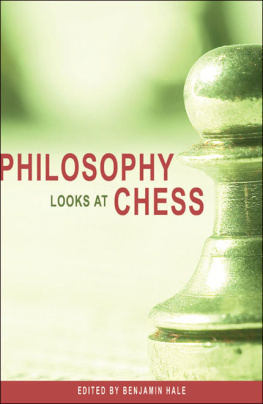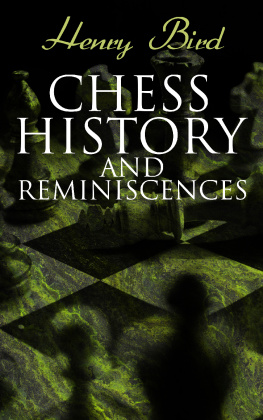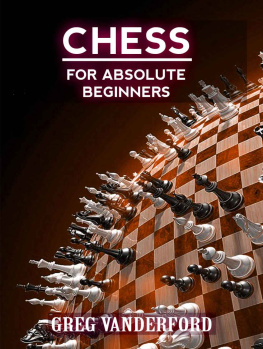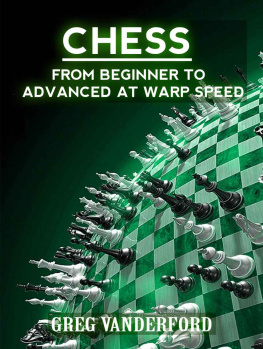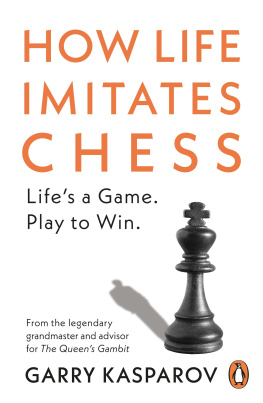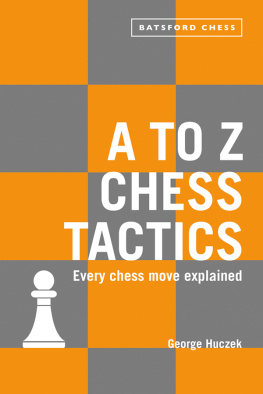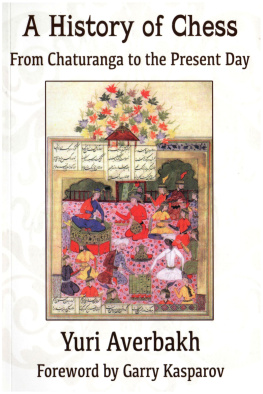Philosophy Looks at Chess
To order books from Open Court, call 1-800-815-2280, or visit our website at www.opencourtbooks.com.
Open Court Publishing Company is a division of Carus Publishing Company.
Copyright 2008 by Carus Publishing Company
First printing 2008
All rights reserved. No part of this publication may be reproduced, stored in a retrieval system, or transmitted, in any form or by any means, electronic, mechanical, photocopying, recording, or otherwise, without the prior written permission of the publisher, Open Court Publishing Company, a division of Carus Publishing Company, 315 Fifth Street, P.O. Box 300, Peru, Illinois, 61354.
Library of Congress Cataloging-in-Publication Data
Philosophy looks at chess / edited by Benjamin Hale.
p. cm.
Includes bibliographical references and index.
Summary: A collection of essays exploring philosophical themes at work in the game of chess. Topics addressed include the intersection of chess and technology, the difference (or lack thereof) between Artificial Intelligence and human intelligence, the nature of games, and cultural aspects of chess strategy
Provided by publisher.
ISBN 978-0-8126-9818-3 (trade paper : alk. paper)
1. ChessPhilosophy. 2. Games and technology. I. Hale, Benjamin, 1972-
GV1314.7.P45 2008
794.1dc22
2008024385
Contents
BERND GRAEFRATH
ANDY MIAH
TAMA COUTTS
JOHN HARTMANN
EVAN SELINGER
BILL MARTIN
AHTI-VEIKKO PIETARINEN
TOMMY J. CURRY
BENJAMIN HALE
PETER MORRISS
DEBORAH P. VOSSEN
STUART RACHELS
A great many papers in philosophy begin with a problem. Imagine, they beseech, that there is a trolley, or a violinist, or a teletransporter, or a planet just like our own in every salient way but one. Suppose, they importune, that everything else being equal, some very minor something is different. Consider the following: You have picked up a book titled Philosophy Looks at Chess. You are in a store, or a library, or a coffee shop. The shelves are festooned with other intriguing volumes: Chess Strategy, Chess Openings, Chess for Dopes; or, on the other side of the room, Leviathan, Zarathustra, The Republic, The Meditations. You must decide: What is this?
When you first read the title of this book on chess and philosophy, you certainly conclude that the book relates to some deep problem in chess. You may be thinking that this must be a book on Kasparovs challenge to Deep Blue or on the relationship between chess and the meaning of the life, or on strategy, broadly conceived. But this bookthe book you have in your handsis nothing of the sort. Its contents could never be so neatly captured by a single question or problem, and its title could never be so easily comprehended by reference to a single chess event or an approach to strategy. Such inherent confusion over the contents of this book may explain why I generally avoid talking about the chess essays Ive collected at the philosophy cocktail parties and black-tie soires that pepper my busy social schedule. Philosophical questions surrounding chess are thought by some to be too pedestrian to crowd out the otherwise pressing philosophical debates on four-dimensionalism, anarcho-syndicalism, and desire satisfactionism. Nevertheless, the content of this collection of essays never fails to spark a discussion.
Contributions to this volume span a wide range of topics related to chess, and diverge from most philosophy volumes in that the approaches of each author are guided by no standard methodology. Some authors write whimsically, while others write with gravity; some speak with authority, while others speak with the sheepish humility of a self-loathing woodpusher. This volume includes essays from so-called analytic philosophers, enamored as they are with concision, logic, and compartmentalization, and so-called Continental philosophers, driven as they are by a flair for the literary and the dramatic. It includes essays from aestheticians and from philosophers of sport, from students and professors, from Grandmasters and grand-patzers. For this reason, this volume, to my mind, functions in the true spirit of both philosophy and chess. There is no clear approach, there is no distinctive doctrine. Instead this volume offers a gallimaufry of writings and musings that relate playfully to the game of chess, written by people who play chess, who like chess, who love chess, and who are addicted to chess.
I have selected most essays for their readability and breadth. Some deal with extraordinarily difficult topics in professional philosophy, while others simply scratch the surface on superficial matters. In this short introduction, I would like to give you a brief overview of each reading and offer, where I can, some justification for my ordering the contents in the way that I have. At the end of the day, the collection is intended playfully, so those who seek to make too much sense of the ordering will find themselves at a loss.
First, the lay of the land: we begin the volume by asking about what it is to understand chess; from understanding or knowing we move into being, into questions about what chess is, and whether chess is an apt metaphor for life; from being we round our task out by moving to doing. This is a natural progression, echoing intuitions from ancient philosophers. Our safari through philosophy and chess takes us from the moment at which we see to the point at which we do.
Bernd Graefrath, a professor at the University of Duisburg-Essen, offers the first chapter. Graefrath provides an illuminating discussion of a type of chess problem for the puzzle-driven player: a retrograde analysis. Where most traditional chess problems present a player with a forward-looking board arrangement and require that the player determine the correct or the best next move or series of moves following from that arrangement, retrograde analysis turns the traditional approach to chess problems on its head. A retrograde analysis calls upon the player to analyze what has already happened in a game, and not what should happen. This breed of chess problem gained popularity with the widely published chess problems of Raymond Smullyan, which Graefrath covers in his piece. For those unfamiliar with retrograde analysis, the four puzzles that Graefrath offers may provide entertainment in themselves. However, there is more at play in Graefraths piece than meets the eye. He seeks the unifying philosophical principle that guides Smullyans many books on retrograde analysis. In his essay, Graefrath not only provides intelligent commentary on these few puzzles, but he concludes that one can tease out two important philosophical insights from Smullyans work. The first is what Graefrath calls cognitive optimism: that given even some of the seemingly most intractable puzzles, our powers of cognition can lead us to unravel the puzzles of the universe. And the second relates to the limitations of cognitive optimism: Smullyan shows that, despite our best abilities, there are many puzzles for which we will never have an answer.
Next page
